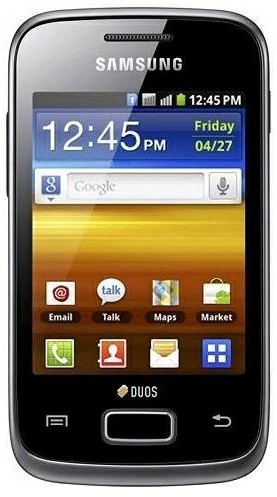The Labeled continue statement Java example
The Labeled continue statement as goto Java example.
public class MainClass {
public static void main(String[] arg) {
String[] arrayOfString = { "Hello", "people", "hello", "world!" };
OuterLoop: for (int e = 0; e < 4; e++) {
for (int i = 0; i < arrayOfString.length; i++) {
if (arrayOfString[i].equals("hello"))
continue OuterLoop;
System.out.println(arrayOfString[i]);
}
}
}
}
/*
Hello
people
Hello
people
Hello
people
Hello
people
*/
396LW NO topic_id
AD
Další témata ....(Topics)
Kvalitní mobilní telefon pro rok 2012 by měl mít tyto, nebo ještě lepší parametry.
Značka Samsung , HTC, LG, Motorola, Sony Ericsson, ZTE Blade
Verze operačního systému Android 2.2 a vyšší.
Procesor a jeho frekvence Qualcomm 800MHz a vyšší.
Paměť RAM 512MB a více.
Paměť ROM 512MB.
Displej a jeho rozlišení 4,3 palce rozlišení 480x800 pixelů pro snadné ovládání a čtení a schopnost zobrazit 16 milionů barev.
Technologie 3G data, WiFi, BlueTooth, GPS přijímač, fotoaparát 3 Mpix, autofokus, diodový blesk.
Výdrž baterie minimálně 1 den a více.
3G internet.

Značka Samsung , HTC, LG, Motorola, Sony Ericsson, ZTE Blade
Verze operačního systému Android 2.2 a vyšší.
Procesor a jeho frekvence Qualcomm 800MHz a vyšší.
Paměť RAM 512MB a více.
Paměť ROM 512MB.
Displej a jeho rozlišení 4,3 palce rozlišení 480x800 pixelů pro snadné ovládání a čtení a schopnost zobrazit 16 milionů barev.
Technologie 3G data, WiFi, BlueTooth, GPS přijímač, fotoaparát 3 Mpix, autofokus, diodový blesk.
Výdrž baterie minimálně 1 den a více.
3G internet.

Check if in drawable folder have two picture with same name and delete one.
For example:
Check the module build folder in Android Studio for two files with same names.
For example:
image_1.jpg
image_1.png
Check the module build folder in Android Studio for two files with same names.
C:\Users\myFolder\AndroidStudioProjects\Project\yourModule\build\intermediates\res\merged\debug\drawable\
Problem:
You have two class with similar names HeadLinesFragment and HeadMyLinesFragment with OnHeadlineSelectedListener.
Check if call correct class in MainActivity.
For example if use HeadMyLinesFragment change implement to HeadMyLinesFragment too!
You have two class with similar names HeadLinesFragment and HeadMyLinesFragment with OnHeadlineSelectedListener.
Check if call correct class in MainActivity.
For example if use HeadMyLinesFragment change implement to HeadMyLinesFragment too!
public class MainActivity extends FragmentActivity
implements HeadLinesFragment.OnHeadlineSelectedListener {
// wrong implements you need correct class name
//implements HeadMyLinesFragment.OnHeadlineSelectedListener
//............
HeadMyLinesFragment firstFragment = new HeadMyLinesFragment(); // because in code using HeadMyLinesFragment
Landscape - portrait orientation change:
boolean mbOrientationLandscape = true;
if(mbOrientationLandscape ){
setRequestedOrientation(ActivityInfo.SCREEN_ORIENTATION_PORTRAIT);
mbOrientationLandscape =false;
}else{
setRequestedOrientation(ActivityInfo.SCREEN_ORIENTATION_LANDSCAPE);
mbOrientationLandscape =true;
}
Best of SQLite explorer and admin download for SQLite 2.x and SQLite 3.x in separated folders.
Download Explorers SQLite 2.x and SQLite 3.x in separated folders
Download Explorers SQLite 2.x and SQLite 3.x in separated folders
Editace: 2011-10-04 08:58:06
Počet článků v kategorii: 396
Url:the-labeled-continue-statement-java-example



